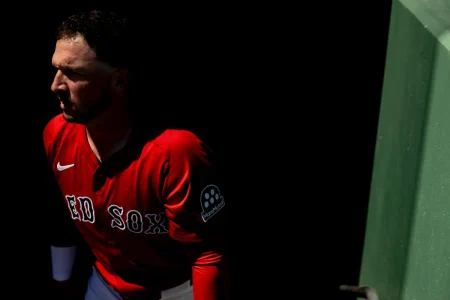Melanie Diaz, a 22-year-old resident of Tampa, Florida, has adopted an unconventional yet remarkably effective method of acquiring holiday decorations and gifts: dumpster diving. Specifically targeting the outdoor trash receptacles behind major retail chains during the post-holiday season, Diaz has unearthed a treasure trove of discarded items, saving herself an estimated $20,000. Her scavenging expeditions primarily focus on stores like TJ Maxx, Burlington, Michaels, Jo-Ann Stores, Pop Shelf, and Home Goods, where she finds perfectly usable, often brand-new, merchandise that has been deemed surplus by the retailers. Diaz’s unique approach to holiday shopping allows her to decorate her home lavishly while simultaneously minimizing her environmental impact by rescuing items from landfills.
Diaz’s dumpster diving adventures reach their peak in December and January, as stores begin clearing out their holiday inventories. This post-Christmas period proves to be the most fruitful, with overflowing dumpsters yielding an abundance of still-packaged decorations, gifts, and other seasonal items. One particularly memorable haul from a TJ Maxx dumpster included a mountain of merchandise so extensive that Diaz had to enlist the help of her family to transport it all. This overflowing abundance led to a family garage sale, allowing them to share the wealth with others and further emphasizing the practical benefits of Diaz’s resourcefulness. The sheer volume of recovered goods underscores the significant amount of potentially reusable items that are discarded by retailers.
The range of items Diaz recovers is extensive, encompassing everything from Christmas trees and wreaths to ornaments, festive clothing, kitchenware, puzzles, and even dog toys. Her finds from Michaels alone, including ten wreaths, are estimated to be worth around $400. Similarly, she has salvaged puzzles and dog toys from TJ Maxx, saving approximately $200 on those items alone. These examples illustrate the considerable financial savings that can be achieved through dumpster diving, especially for seasonal items that are often marked down significantly after the holidays. Diaz’s experience demonstrates that valuable and usable items are often needlessly discarded, presenting opportunities for those willing to explore unconventional acquisition methods.
Beyond the personal financial benefits, Diaz finds immense satisfaction in giving her recovered treasures a new lease on life. The act of rescuing perfectly good items from the trash aligns with her environmentally conscious approach and allows her to decorate her home for the following Christmas season without incurring significant costs. Furthermore, Diaz extends her generosity by sharing her finds with friends and family, spreading the holiday cheer and highlighting the social benefits of her unique approach. This sharing reinforces the idea that reusable items should be given a second life rather than contributing to landfill waste.
Diaz’s story highlights the significant waste generated by retailers, particularly during the holiday season, and offers a compelling example of how individuals can creatively and responsibly address this issue. Her dumpster diving expeditions not only provide her with substantial financial savings but also allow her to contribute to sustainability efforts by diverting usable items from landfills. Furthermore, her willingness to share her finds with others fosters a sense of community and resourcefulness. Diaz’s story serves as an inspiration for individuals seeking alternative ways to acquire goods while minimizing their environmental impact.
By transforming discarded items into treasured possessions, Diaz challenges conventional notions of consumerism and demonstrates the potential value hidden within the refuse of others. Her resourcefulness and commitment to repurposing discarded goods offer a powerful message about mindful consumption and the potential for creative solutions to address waste and overconsumption. Diaz’s story underscores the importance of looking beyond traditional shopping avenues and considering the environmental and economic benefits of repurposing discarded items. Her unique approach serves as a reminder that what some may consider trash can indeed be another person’s treasure, offering both financial and environmental rewards.















